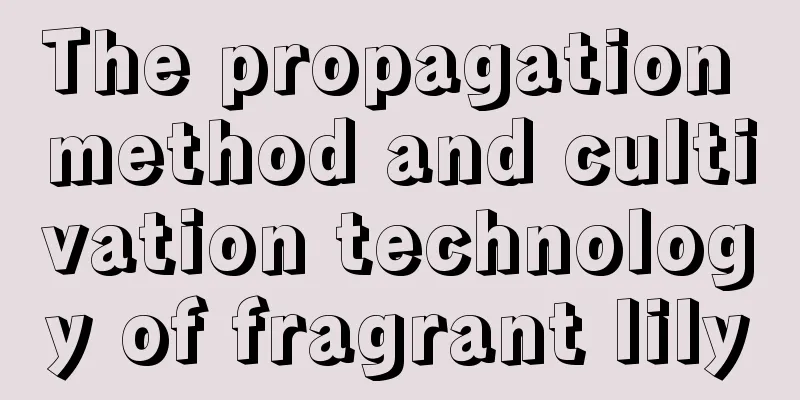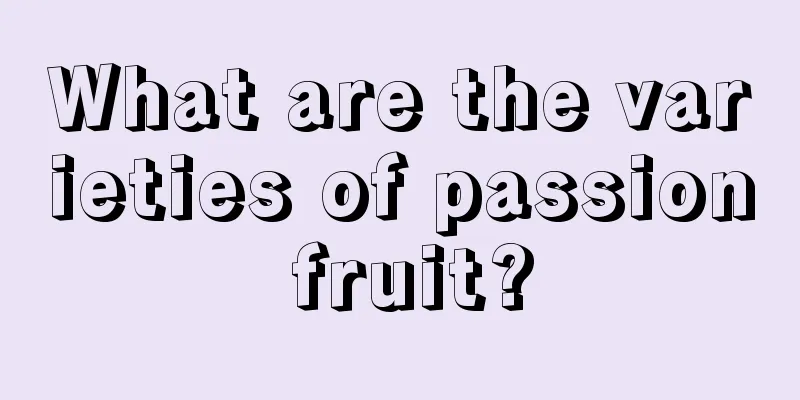The propagation method and cultivation technology of fragrant lily

|
The fragrant lily is known as the aristocrat among lilies and is highly praised for its pure and flawless petals and elegant posture. The fresh and elegant fragrance it exudes adds a touch of nature and tranquility to the home environment, making it an ideal choice for interior decoration. Next, we will learn the propagation methods and cultivation techniques of fragrant lilies. 1. Breeding Methods Bulb propagation: Although the number of bulbs of the fragrant lily is small, limiting its use as the main means of propagation, it can still be propagated through bulbs. Bulb propagation: In the fragrant lily, there are purple-black bulbils, which are shaped like small bulbs and can be used for propagation. Seed propagation: The seeds of the fragrant lily can be divided into fast-germination and slow-germination types according to their germination speed. Slow-germinating seeds need to go through a longer germination cycle, including storage, rooting, bulblet growth to flowering; while the germination process of fast-germinating seeds is relatively short. Cutting propagation: The stems and leaves of the fragrant lily close to the ground have the ability to regenerate and can grow again under hydroponic or moist soil conditions. 2. Cultivation Technology 1. Soil selection Lilies prefer fertile, deep soil rich in humus, and should avoid using hard, sticky soil. The soil should be well-drained, and slightly acidic soil with a pH value between 5.5 and 6.5 is most suitable. 2. Watering principles Watering should be moderate, keeping the soil in the pot slightly moist, and avoid excessive moisture that may cause the bulb to rot. 3. Lighting requirements Potted lilies have different light requirements at different growth stages. They need to be shaded during the budding period, and should also be appropriately shaded when the temperature is high. During other periods, especially the flower development period, sufficient light should be ensured. 4. Temperature control The ideal temperature range for growth and flowering is 16 to 24 degrees Celsius. Growth slows or stops when temperatures drop below 5 degrees Celsius or above 30 degrees Celsius. If the night temperature in winter continues to be below 5 degrees Celsius, it may affect flower bud differentiation and bud development. 5. Fertilization techniques Lilies have a high demand for nitrogen and potassium fertilizers, which should be applied every 10 to 15 days during the growth period. The supply of phosphorus fertilizer needs to be moderately limited, as excessive amounts may cause the leaves to turn yellow. During the flowering period, the application of phosphorus fertilizer can be increased appropriately. 6. Pest and disease control Gray mold: Use 500 times diluted carbendazim, thiophanate-methyl and mancozeb for control. Damping-off disease: Before planting, soak the plant in 500 times diluted Fumeisen or 50 times diluted 40% formaldehyde for prevention and control. Root rot: After removing the diseased plants, use dichlorodiphenyltrichloroethane to disinfect the soil. Pests: Use omethoate, dicofol and poison bait to control pests such as aphids, mites, white grubs and cutworms. 7. Pruning management Cut off the flower stems after flowering to reduce nutrient consumption. If you need to keep the bulbs, continue to fertilize to replenish nutrients. Dig out the bulbs after one month, cut off the fibrous roots, and refrigerate them to break dormancy. You can then plant them again, but be aware that the quality of the flowers may decline. 8. Flowering period regulation To make the fragrant lily bloom at a specific time, the bulbs can be treated with temperature regulation combined with appropriate night temperature management. 9. Bud removal treatment In forced cultivation, if there is insufficient light, bud loss may occur. Artificial lighting can effectively prevent bud loss, promote flowering, and improve the quality of cut flowers. The above is an introduction to the cultivation methods of fragrant lilies. Following these maintenance methods can ensure that the fragrant lilies grow healthily and bloom charming flowers under appropriate conditions.
|
<<: Key points and advantages and disadvantages of corn wide and narrow row planting technology
>>: Corn seedling raising technology and methods
Recommend
Cultivation Techniques of Azalea Bonsai
How to make azalea bonsai Rhododendron can be pro...
How often should I water my baby's breath?
How often should I water my baby's breath? Th...
How to pinch the tips of million bells
Topping method Step 1: First pinching After the s...
How to grow the green radish in water to make it more vigorous
The water of the green radish grown in water need...
How to prune potted Buddha belly bamboo
1. Dwarfing treatment Only by dwarfing the plant ...
Cultivation methods and precautions of thin makeup
The thin makeup lady is easy to raise. It is a va...
Differences between blue flax and sesame flowers
1. Leaf Difference The leaves of blue flax are th...
Is the flower of Ba La Xiang poisonous?
1. Is it poisonous? The flowers of the baicalensi...
This flower must not be exposed to rain. If you don’t move it indoors quickly, it will die immediately!
Don’t let Clivia get exposed to rain, or its core...
Fern cultivation methods and precautions
Ferns are relatively easy to grow. They originall...
The causes and treatment methods of yellow leaves of purple-leaf dwarf cherry
1. Insufficient light Reason: Purple-leaf dwarf c...
How to grow variegated trachelospermum to make the leaves look good
1. Selection of loam It has strong vitality and g...
What is the function of cosmos
The ornamental value of cosmos in gardens The cos...
What to do if Michelia odorifera leaves fall off
Normal aging Michelia can be seen for both its fl...
Break off a branch in summer, cut it into 8 sections, take root in 3 days, and bloom in a month!
Cut the green radish branches into 8 sections and...









